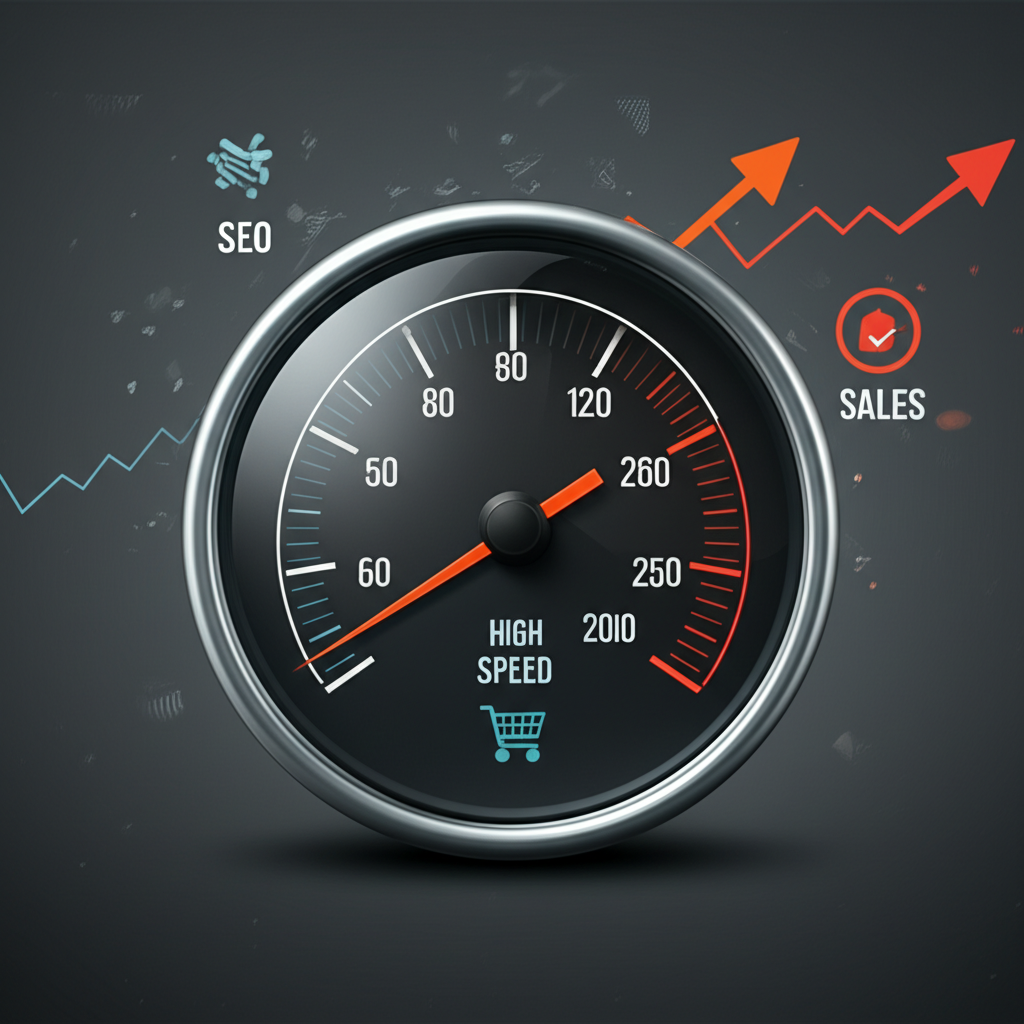- Why Website Speed Matters for SEO
- Impact on Search Engine Rankings
- Mobile-First Indexing and Website Speed
- How Website Speed Impacts Sales
- User Experience and Bounce Rate
- Conversion Rates and Revenue
- Mobile Conversions and Website Speed
- Improving Your Website Speed: Actionable Strategies
- Optimize Images
- Leverage Browser Caching
- Minimize HTTP Requests
- Choose a Reliable Hosting Provider
- Website Speed: A Continuous Effort
Website Speed: Crucial for SEO & Sales
Website speed is a critical factor for both search engine optimization (SEO) and sales. In today’s fast-paced digital world, users expect websites to load quickly and efficiently. A slow website can lead to a poor user experience, decreased conversions, and ultimately, lost revenue. This article will explore the importance of website speed, its impact on SEO and sales, and provide actionable strategies to improve your website’s performance.
Why Website Speed Matters for SEO

Search engines, particularly Google, prioritize user experience. Website speed is a crucial component of that experience. A slow-loading website frustrates users and signals to search engines that the site may not offer a quality experience. Consequently, Google is less likely to rank slow websites highly in search results.
Impact on Search Engine Rankings
Google has explicitly stated that page speed is a ranking factor for both desktop and mobile searches. This means that faster websites are more likely to appear higher in search engine results pages (SERPs), leading to increased organic traffic. Improving website speed can, therefore, directly translate to better visibility and more potential customers discovering your business.
Mobile-First Indexing and Website Speed
With the rise of mobile browsing, Google has adopted a mobile-first indexing approach. This means Google predominantly uses the mobile version of a website for indexing and ranking. Given the often-limited bandwidth and processing power of mobile devices, website speed is even more critical for mobile users. Optimizing your website’s performance on mobile is essential for maintaining good search engine rankings.
How Website Speed Impacts Sales
Beyond SEO, website speed has a profound impact on sales and conversions. A slow website can directly affect your bottom line in several ways.
User Experience and Bounce Rate
A slow-loading website leads to a poor user experience. Users are impatient and will likely abandon a website that takes too long to load. This is reflected in the bounce rate, which is the percentage of visitors who leave a website after viewing only one page. A high bounce rate signals to search engines that the website isn’t engaging and can negatively impact rankings. Furthermore, a high bounce rate means fewer opportunities to convert visitors into customers.
Conversion Rates and Revenue
Website speed directly correlates with conversion rates. Studies have shown that even a one-second delay in page load time can result in a significant drop in conversions. This translates to lost sales and revenue. A faster website, on the other hand, provides a smoother and more enjoyable user experience, encouraging visitors to explore the site, engage with the content, and ultimately, make a purchase.
Mobile Conversions and Website Speed
The impact of website speed is even more pronounced on mobile devices. Mobile users are often on the go and have less patience for slow-loading websites. A slow mobile site can lead to significantly lower conversion rates compared to a fast, responsive site. Optimizing your website for mobile speed is paramount for maximizing conversions and revenue from mobile users.
Improving Your Website Speed: Actionable Strategies
Optimizing your website speed requires a multi-faceted approach. Here are some key strategies to improve your website’s performance:
Optimize Images
Large image files can significantly slow down your website. Compressing images without compromising quality is crucial. Use tools like TinyPNG or ShortPixel to reduce image file sizes. Also, implement lazy loading, which only loads images when they are visible in the viewport, further improving initial page load time.
Leverage Browser Caching
Browser caching allows users’ browsers to store static assets, such as images, CSS files, and JavaScript files, locally. This reduces the amount of data that needs to be downloaded on subsequent visits, resulting in faster loading times.
Minimize HTTP Requests
Each element on your webpage, from images and scripts to stylesheets, requires an HTTP request. Reducing the number of requests can significantly improve website speed. Combine and minify CSS and JavaScript files to reduce the number of requests needed to load these resources.
Choose a Reliable Hosting Provider
Your hosting provider plays a critical role in website speed. Opt for a reputable hosting provider that offers fast servers and optimized infrastructure. Consider investing in a content delivery network (CDN) to distribute your website’s content across multiple servers globally, reducing latency and improving loading times for users in different locations.
Website Speed: A Continuous Effort
Improving website speed is not a one-time fix but an ongoing process. Regularly monitor your website’s performance using tools like Google PageSpeed Insights and GTmetrix to identify areas for improvement. Implement the strategies outlined above and continuously test and refine your website to ensure optimal speed and performance. By prioritizing website speed, you can enhance user experience, improve SEO rankings, and ultimately, drive more sales and revenue for your business.











Leave a Reply